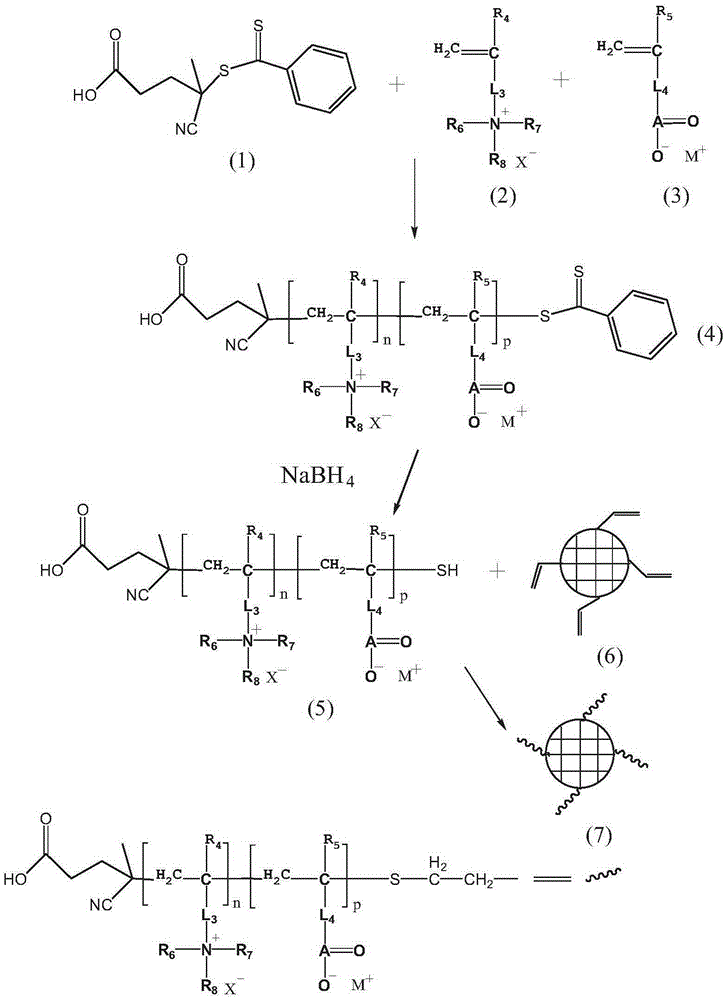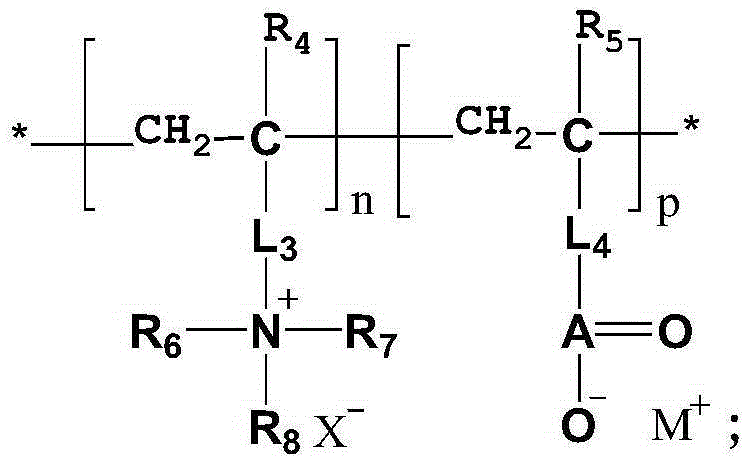Blood purification adsorbent and preparation method thereof
A blood purification and adsorbent technology, applied in chemical instruments and methods, and other chemical processes, can solve problems such as poor biocompatibility, achieve low cost, improve envelope stability, and easily obtain raw materials
- Summary
- Abstract
- Description
- Claims
- Application Information
AI Technical Summary
Problems solved by technology
Method used
Image
Examples
Embodiment 1
[0094] The suspension polymerization step is carried out: first, 50 parts by mass of styrene, 50 parts by mass of divinylbenzene, 100 parts by mass of toluene, and 0.8 parts by mass of benzoyl peroxide are mixed to form an oil phase. The oily phase was then added to a water phase consisting of 0.5 parts by mass of polyvinyl alcohol and 400 parts by mass of water. Then, suspension polymerization was carried out at 80° C. for 5 hours (hours), and the porogen in the resin obtained by polymerization was removed to obtain an adsorption resin (styrene resin).
[0095] Perform the RAFT polymerization step: first add N,N-dimethylethylacrylamide ammonium chloride, 2-acrylamide-2-methylpropanesulfonate in a molar ratio of 1:0.5:0.001:0.01:0.1 to the reaction vessel Acid, RAFT reagent 4-cyanovaleric acid dithiobenzoic acid, initiator 4,4-azo (4-cyanovaleric acid) (V-501) and purified water, stirred to dissolve. Then react under the condition of heating at 70° C. for 2 hours to obtain a ...
Embodiment 2
[0101] The suspension polymerization step is carried out: firstly, 50 parts by mass of styrene, 50 parts by mass of divinylbenzene, 150 parts by mass of toluene, 150 parts by mass of isooctane, and 0.8 parts by mass of benzoyl peroxide are mixed to form an oil phase. The oil phase was then added to a water phase consisting of 1.0 parts by mass of gelatin and 420 parts by mass of water. Then, the suspension polymerization reaction was carried out at a temperature of 90° C. for 4 hours, and the porogen in the resin obtained by polymerization was removed to obtain an adsorption resin (styrene-based resin).
[0102] Perform the RAFT polymerization step: first add 2-methacryloyloxyethyltrimethylammonium chloride, 2-acrylamido-2-methyl Propanesulfonic acid, RAFT reagent 4-cyanovaleric acid dithiobenzoic acid, initiator 4,4-azo(4-cyanovaleric acid) (V-501) and purified water were stirred and dissolved. Then react under heating condition at 75° C. for 2 hours to obtain a polymer inte...
Embodiment 3
[0108] Execute the suspension polymerization step: first, mix 40 parts by mass of styrene, 10 parts by mass of ethylstyrene, 50 parts by mass of divinylbenzene, 150 parts by mass of toluene, 50 parts by mass of gasoline, and 0.8 parts by mass of benzoyl peroxide to form oily phase. The oily phase was then added to a water phase consisting of 7 parts by mass of polyacrylamide and 700 parts by mass of water. Then, suspension polymerization was carried out for 6 hours at a temperature of 60° C., and the porogen in the resin obtained by polymerization was removed to obtain an adsorption resin (styrene-based resin).
[0109] Perform the RAFT polymerization step: first add methacrylamidopropyldimethylamine and 2-acrylamido-2-methylpropanecarboxylic acid in a molar ratio of 1:1:0.1:0.01:5 to the reaction vessel, RAFT Reagent 4-cyanovaleric acid dithiobenzoic acid, initiator 4,4-azo (4-cyanovaleric acid) (V-501) and distilled water, stirred to dissolve. Then react under heating cond...
PUM
 Login to View More
Login to View More Abstract
Description
Claims
Application Information
 Login to View More
Login to View More - R&D
- Intellectual Property
- Life Sciences
- Materials
- Tech Scout
- Unparalleled Data Quality
- Higher Quality Content
- 60% Fewer Hallucinations
Browse by: Latest US Patents, China's latest patents, Technical Efficacy Thesaurus, Application Domain, Technology Topic, Popular Technical Reports.
© 2025 PatSnap. All rights reserved.Legal|Privacy policy|Modern Slavery Act Transparency Statement|Sitemap|About US| Contact US: help@patsnap.com



